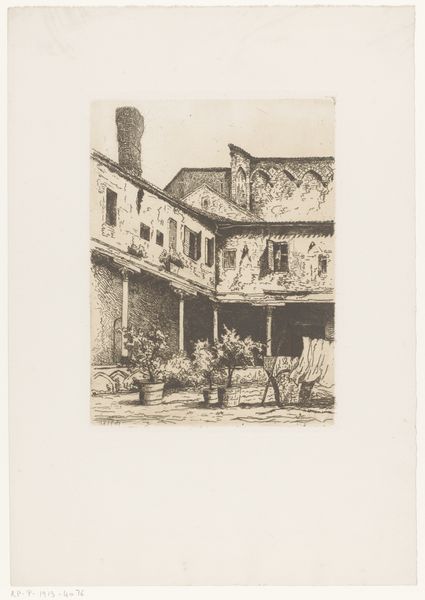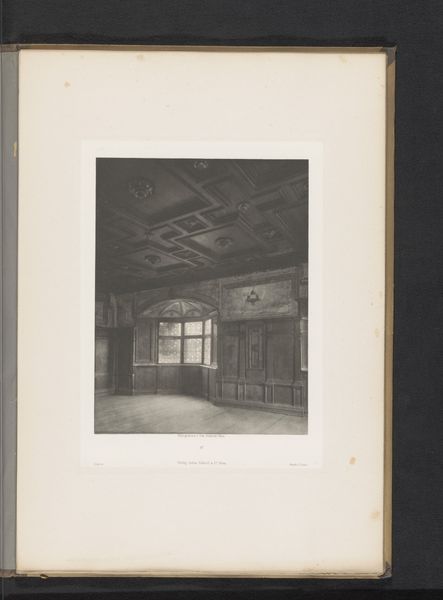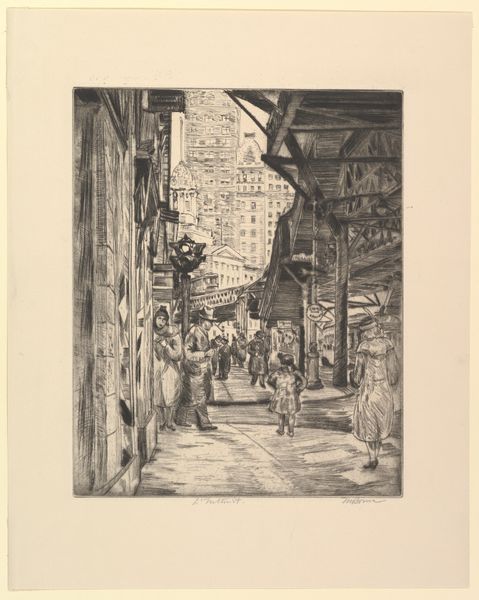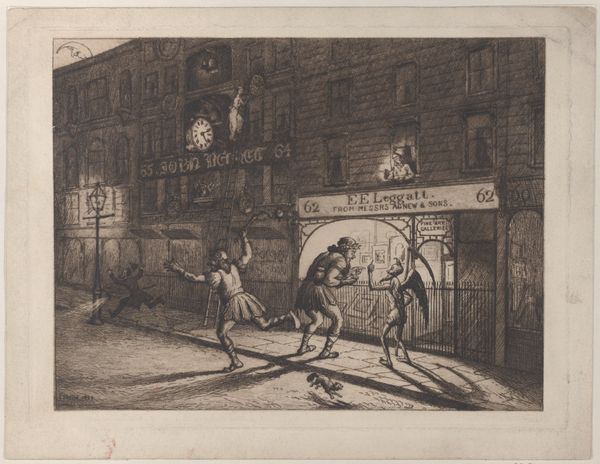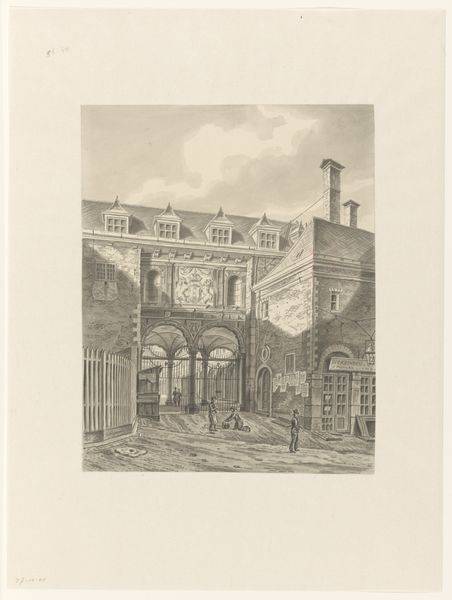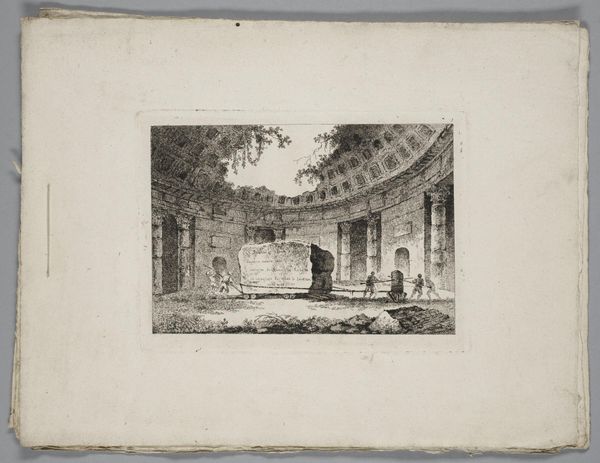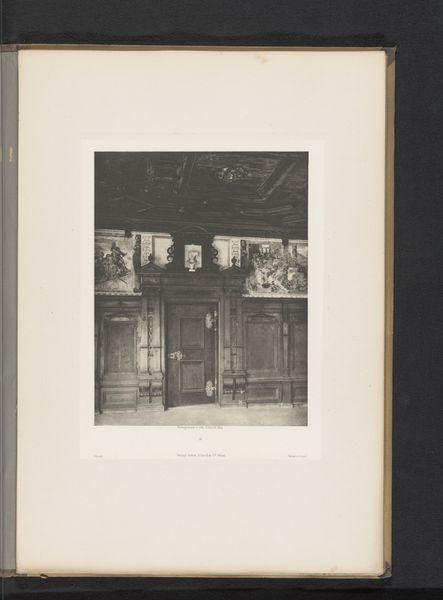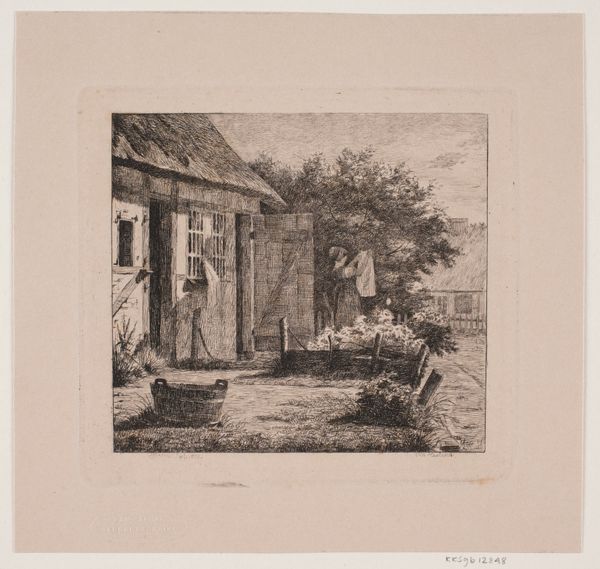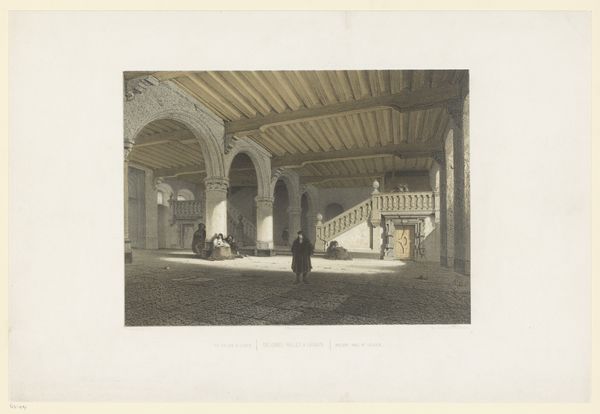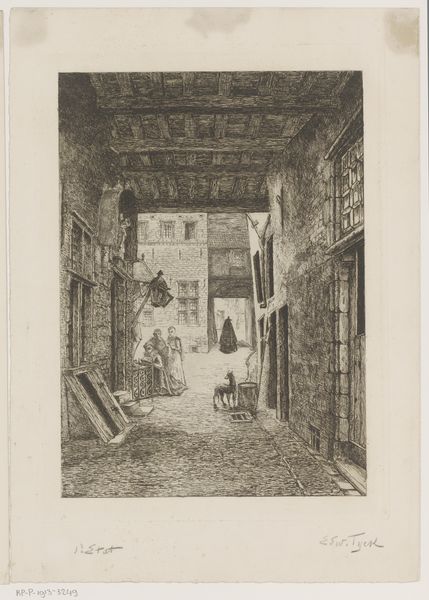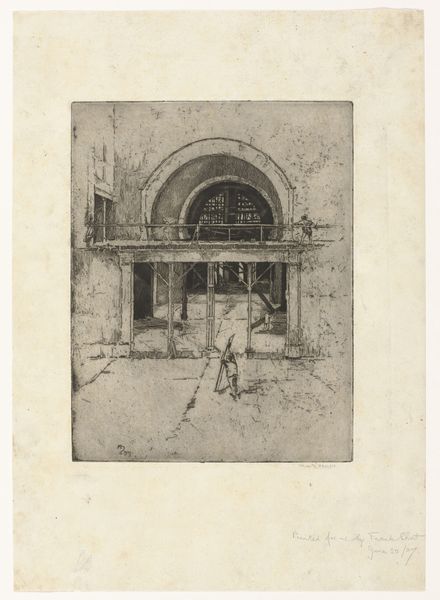
Dimensions: plate: 27.4 × 21 cm (10 13/16 × 8 1/4 in.) sheet: 48.5 × 32.5 cm (19 1/8 × 12 13/16 in.)
Copyright: National Gallery of Art: CC0 1.0
Curator: Allow me to introduce Francesco Colombi Borde's etching, "Il Duello," created in 1880. Editor: There's an undeniable tension conveyed, despite the rather static image. I can almost feel the weight of tradition bearing down on these figures, rendered in the fine, almost frantic, lines of the etching. Curator: Etching as a medium, of course, allows for very fine detail. Look closely at the textures – the wooden beams of the ceiling, the somewhat worn surfaces of the walls, even the glimmer of the light coming through the windows. The materials tell a story about the space itself. How do you perceive that interplay of material representation and implied violence? Editor: Well, historically, duels such as these were highly ritualized events, particularly in the late 19th century, carrying considerable social weight and representing honor, justice, and belonging to a class in crisis. Colombi Borde manages to capture that rigidity within the looser, Romantic aesthetic popular then. The drawing looks like a stage! Curator: Interesting. I’m looking more at the process: etching itself involves corrosive agents and a physical labor, mirroring the destructive potential inherent in the duel. Consider also the performative aspect of producing an intaglio print -- how many prints were produced and distributed, further enacting that performative element? Editor: That repetition speaks to its power, indeed! The duel itself was a public drama in many ways. This image being circulated further embeds the violence and the code of honor into public consciousness. One wonders if the artist condoned or criticized such acts? Curator: That's an unanswerable question. What we know is the laborious production process embedded within these materials -- which becomes both a physical inscription of the scene, and part of the scene itself. I think that interplay allows the viewer to actively participate. Editor: Yes, I see it too. Reflecting on it further, this seemingly small etching offers a fascinating insight into a moment where social ritual met personal honor and violence—all disseminated through the repeatable format of print. Curator: Indeed, considering how those reproducible forms also become materials is the next challenge. Thanks for the chat.
Comments
No comments
Be the first to comment and join the conversation on the ultimate creative platform.
